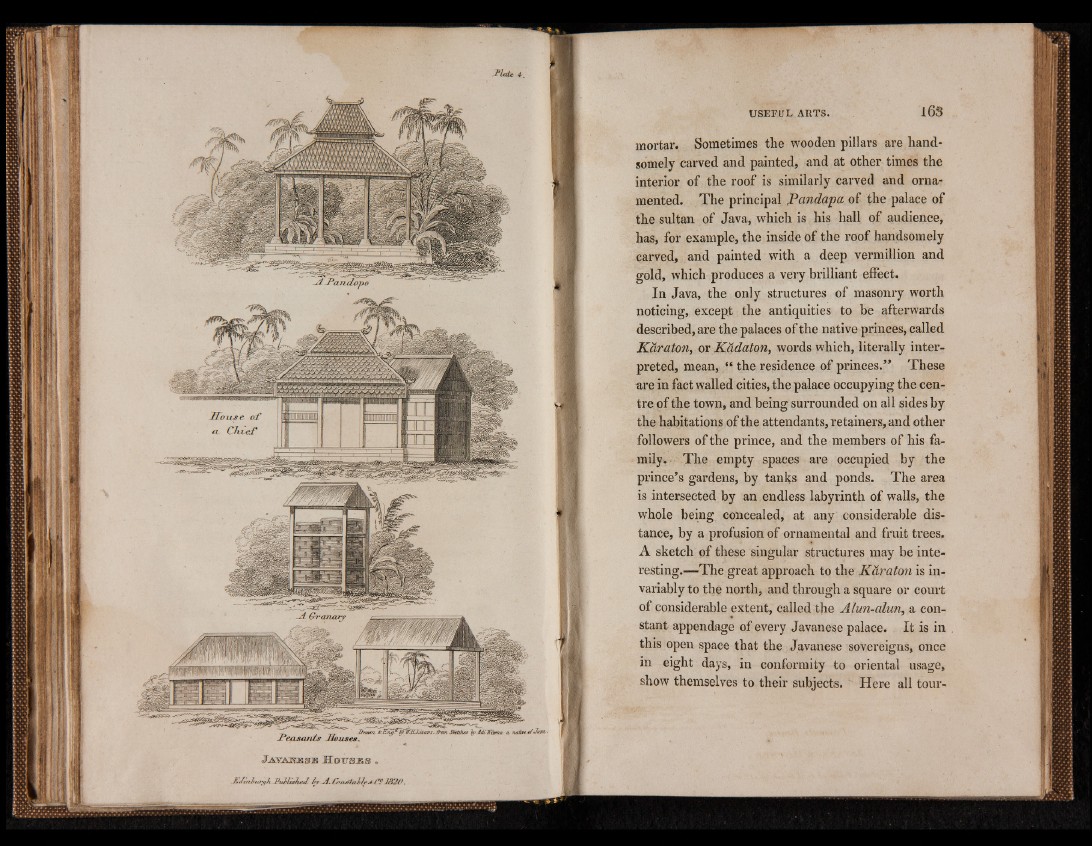
A Granary
J^ecL saríts Jío n ses. X v ta r s . £ram Sketches TffJLdbWiama, a- nahre o f J&
J/our? e. o f
c l C h i e f
JL Jen ^n in q T i P u b ü frh ed s ¿ y f i . C om lñ 'A O .
f U é 4.
mortar. Sometimes the wooden pillars are handsomely
carved and painted, and at other times the
interior of the roof is similarly carved and ornamented.
The principal Pandapa of the palace of
the sultan of Java, which is his hall of audience,
has, for example, the inside of the roof handsomely
carved, and painted with a deep vermillion and
gold, which produces a very brilliant effect.
In Java, the only structures of masonry worth
noticing, except the antiquities to be afterwards
described, are the palaces of the native princes, called
Káraton, or Kádaton, words which, literally interpreted,
mean, “ the residence of princes.” These
are in fact walled cities, the palace occupying the centre
of the town, and being surrounded on all sides by
the habitations of the attendants, retainers, and other
followers of the prince, and the members of his family.
The empty spaces are occupied by the
prince’s gardens, by tanks and ponds. The area
is intersected by an endless labyrinth of walls, the
whole being concealed, at any considerable distance,
by a profusion of ornamental and fruit trees,
A sketch of these singular structures may be interesting.—
The great approach to the Káraton is invariably
to the north, and through a square or court
of considerable extent, called the Alun-alun, a constant
appendage of every Javanese palace. It is in
this open space that the Javanese sovereigns, once
in eight days, in conformity to oriental usage,
show themselves to their subjects.Here all tour